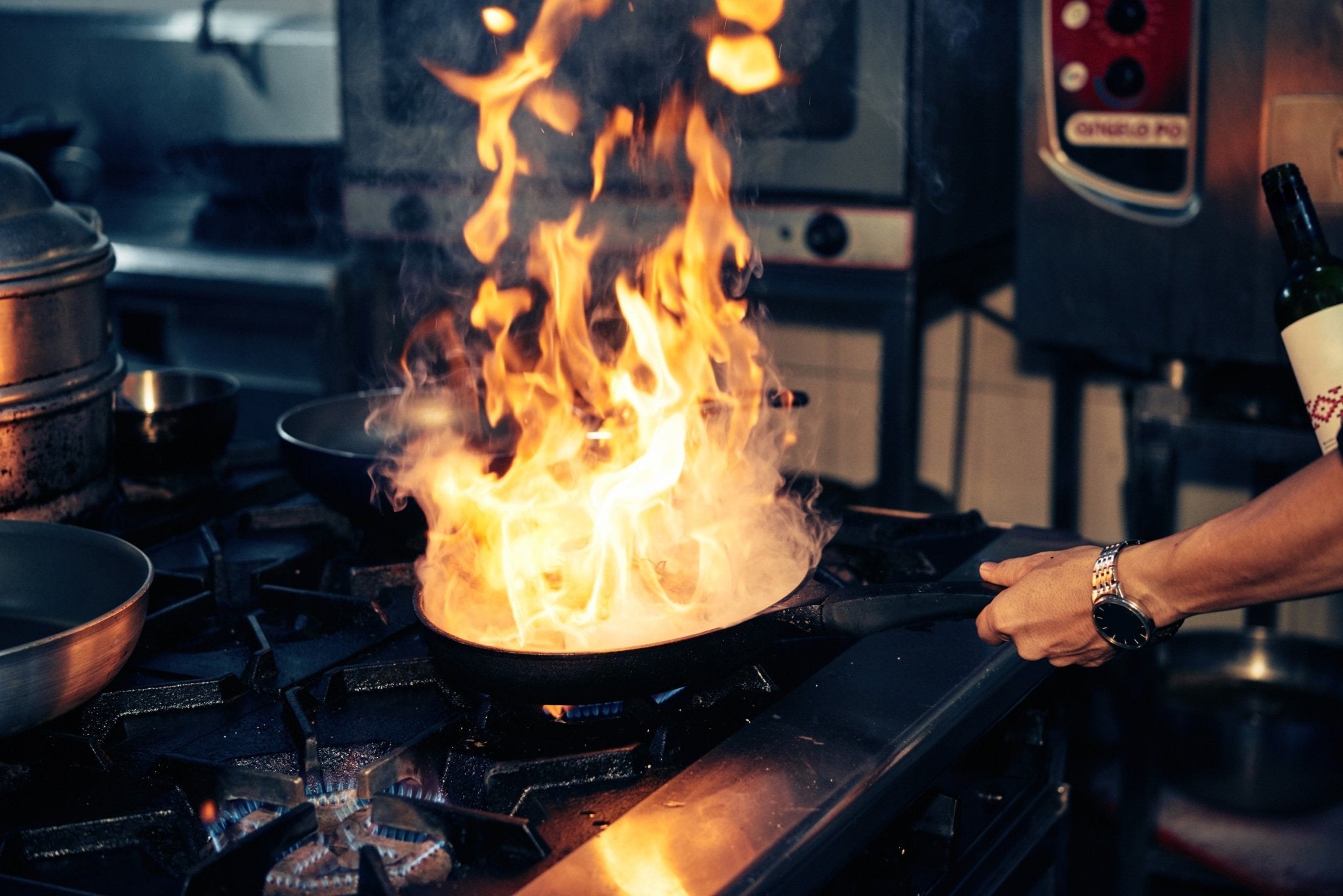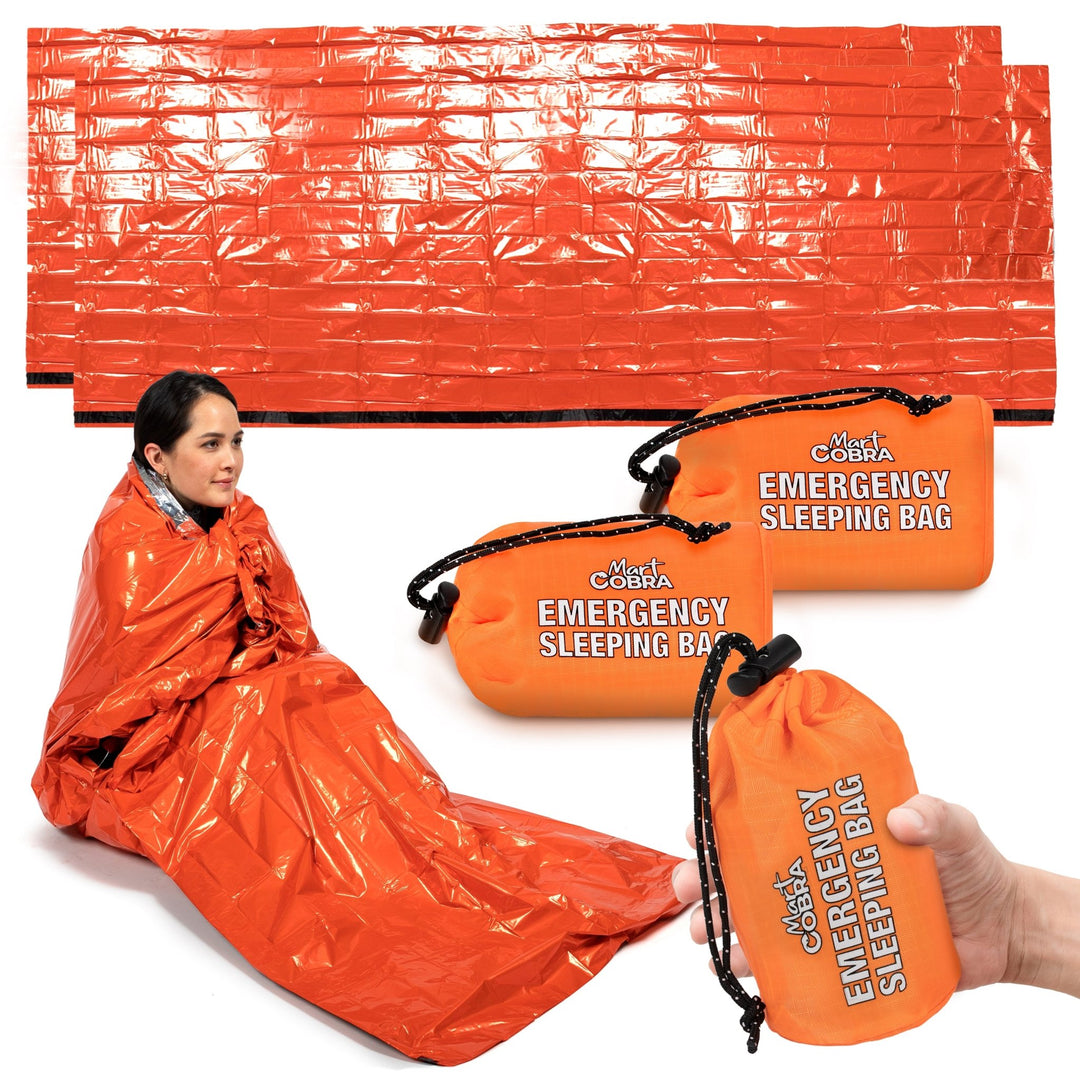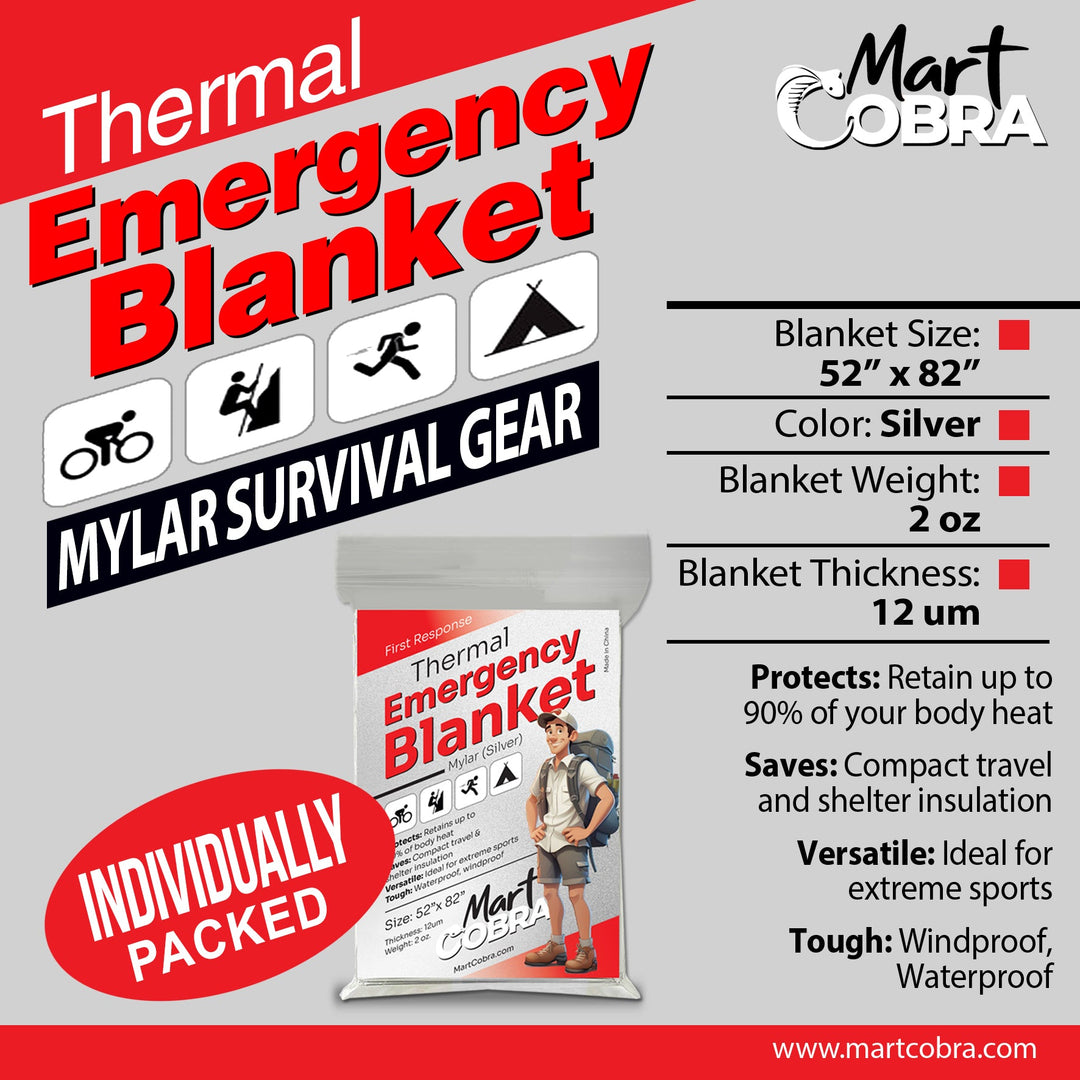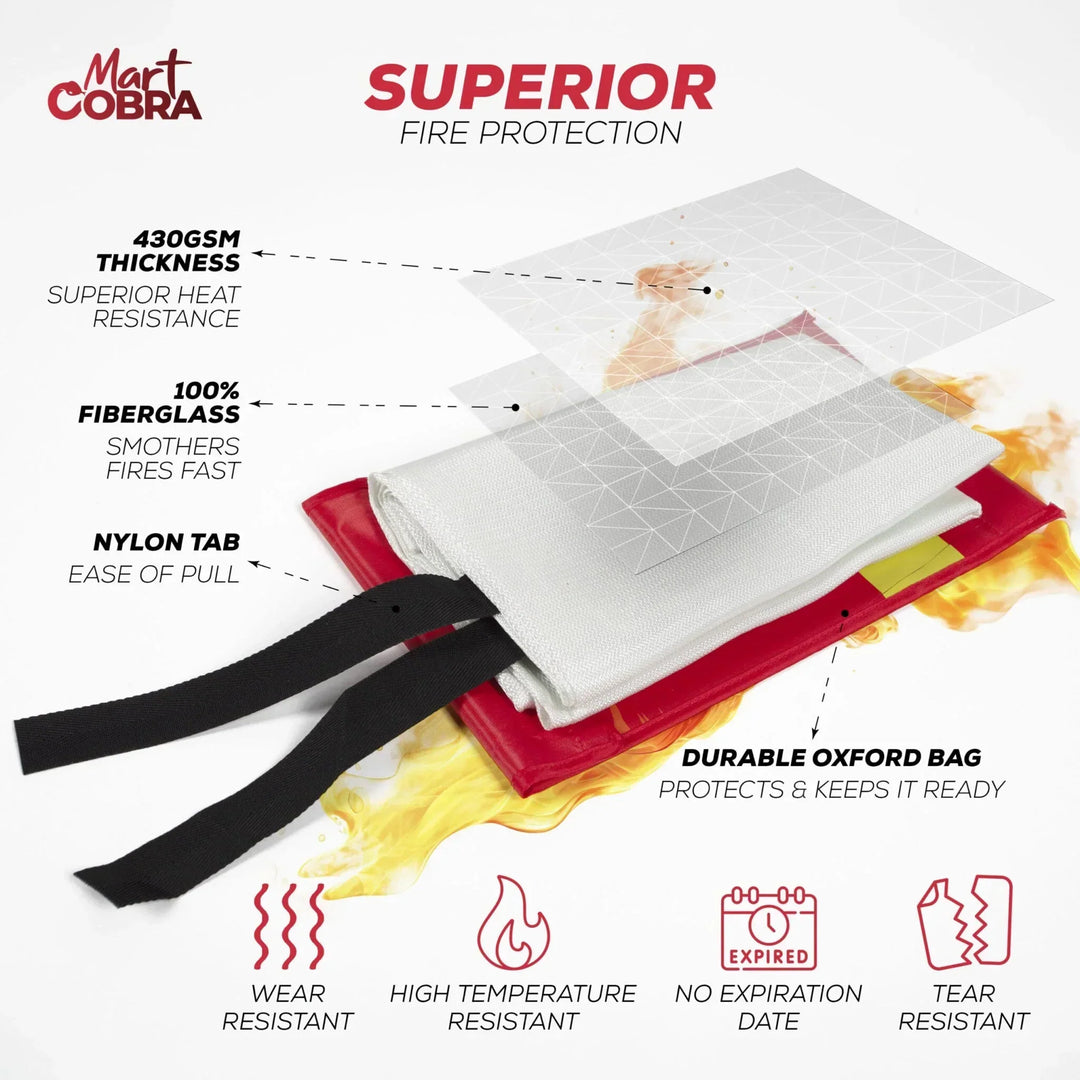The pleasant sizzle of frying pans is a common symphony in many kitchens. We all enjoy the comfort and creativity of cooking at home, yet alongside these pleasures, the risk of a fire—a grease fire, in particular—is a stark reality.
Grease fires occur when oil or fat becomes too hot, igniting flames that can swiftly spiral out of control. Knowing how to handle such a situation is crucial for preventing minor mishaps and cooking fires from becoming full-blown disasters.
In this comprehensive guide, we will walk you through what causes grease fires, the immediate actions to take when one starts, the right tools for extinguishing it, how to prevent it, and lastly, the safety measures you should take after you put out a grease fire.
What Causes Grease Fires?
Grease fires in the kitchen can ignite for several reasons, often catching cooks by surprise. Recognizing these common causes can help in preventing future incidents:
Overheating Oil
When oil surpasses its smoke point and gets too hot in a pan on the stove, it can catch fire. This usually happens when the stovetop is left unattended or when you are deep-frying at high temperatures without a thermometer to monitor the oil’s heat.
Did you know that smoke points for common oils can range from 350 to 520 degrees Fahrenheit? This means that while you can safely heat some oils at high temperatures, others should not be heated above medium. To avoid an oil fire, always follow recommended cooking temperatures and use a thermometer when necessary.
Splashing Oil
Splashing oil is a significant hazard in kitchens and a prevalent cause of grease fires. When cooking, particularly when frying or sautéing at high temperatures, oil can easily splash out of the pan. If this oil comes into contact with the stove's burner or a hot surface, it can ignite quickly.
The risk may also increase when handling larger cuts of meat with higher water content, such as a turkey. When placed into oil for frying, the water in these foods can cause the oil to bubble and splatter out of the pan. If the hot oil comes into contact with an open flame or heat source, a fire can break out.
To prevent splashing oil, always use a lid or screen when frying or sautéing and avoid overcrowding the pan with too much food. Additionally, make sure to dry any wet food before adding it to the heated pan.

Pouring Water Over Hot Oil
The most common and perhaps the most dangerous mistake that can occur in your kitchen is pouring water over hot oil. When water touches a pan of hot oil, the water vaporizes, causing the fat to burst into flames, creating a fireball that can easily engulf the room.
Remember, never pour water onto a grease fire. Instead, smother the flames with a lid or use a fire extinguisher specifically designed for oil fires.
Combustible Items Near the Stove
Having combustible materials such as paper towels, curtains, or wooden utensils near the stove creates a significant fire hazard. These materials can easily catch fire from the heat of cooking and quickly spread to other areas in the kitchen.
To prevent this, keep all flammable items at a safe distance, at least three feet away from stoves and ovens.
Cooking Equipment Malfunction
Sometimes, a cooking fire can occur due to equipment malfunction, such as a faulty burner or overheating appliance. Regular maintenance and inspections of cooking equipment can help prevent these types of fires.
How to Stop a Grease Fire?
Even with the best precautions, grease fires can still occur. In such instances, it's imperative to respond swiftly and decisively to prevent injuries or damage to property.
Fire is made up of three elements: fuel, oxygen, and heat. To extinguish a fire, one or more of these elements must be removed. In the case of a grease fire, the fuel is the oil or fat burning on top of the stove, while air provides oxygen for the flames, and heat is generated by the cooking fire itself.
To stop a grease fire safely, follow these steps:
1. Turn Off the Stove
If you are cooking and a pot or pan suddenly catches fire, immediately turn off the stove. This will cut off the heat source and prevent the fire from growing larger.
If the grease fire is in the oven, keep the door closed and turn off the heat. This will prevent oxygen from entering the oven and fueling the fire.
2. Cover the Flames
Using a metal lid or a baking sheet, quickly cover the pan to smother the flames. Do not use glass, as it can shatter from the pressure of the fire.
If you do not have a metal lid or baking sheet, use a damp towel to cover the flames. This will also help to cut off the oxygen supply.
3. Use Baking Soda or Salt
If the fire is still burning after covering it, you can use baking soda or salt to extinguish it. These household items can smother a small grease fire without causing any chemical reactions.
Baking soda releases carbon dioxide when heated, which can suffocate the flames, whilesalt absorbs heat and prevents oxygen from reaching the fire.
Never Use Flour or Water
While baking soda and salt can effectively put out grease fires, it's crucial to avoid using other powdered substances like flour, baking powder, or sugar. These materials can be highly flammable, potentially fueling the fire instead of suppressing it. Additionally, introducing water to burning oil can lead to a dangerous explosion, transforming the blaze into a fireball.

4. Use a Fire Blanket
A fire blanket is an effective tool in extinguishing a grease fire. A fire blanket works by depriving the fire of oxygen, one of the three elements fires need to sustain themselves. To use a fire blanket on a grease fire, follow these steps:
-
Pull the tabs to release the fire blanket from its packaging. Ensure you keep yourself as far away from the fire as possible to avoid burns.
-
Hold the blanket in front of you to shield yourself from the heat and flames as you approach the fire.
-
Gently lay the blanket over the entire fire.Do not throw it, as this could cause the burning grease to splash and spread the fire.
-
Leave the blanket in place until the fire has been completely suffocated and the area has cooled down. Removing the blanket too early can allow the fire to reignite.
- Call emergency services if the fire cannot be controlled or if the blanket does not extinguish the fire. It’s essential to ensure everyone's safety by being prepared to evacuate the area if necessary.
What type of fire blanket should be used for kitchen fires?
A fiberglass fire blanket with a temperature rating of at least 900°F (482°C) should be used for kitchen fires. This ensures that the blanket can withstand the high temperatures of a grease fire without melting or catching on fire itself.
If you are in the market forfire blankets, consider investing in premium-quality fire blankets from Mart Cobra. Designed with safety and efficiency in mind, our fire blankets are an essential addition to any kitchen.
5. Use a Fire Extinguisher
If the fire is too large to cover or cannot be smothered with baking soda, salt, or a fire blanket, use a fire extinguisher.
Fire extinguishers are classified by the type of fire they can put out. For a grease fire, you need an extinguisher that is rated for Class B or Class K fires, which involve flammable liquids and cooking oils, respectively.
Here's how to use a Class K Fire Extinguisher on a kitchen fire:
-
Pull the pin at the top of the extinguisher to break the tamper seal.
-
Aim the nozzle towards the base of the fire, standing at least six feet away from it.
-
Squeeze the handle or lever to release the extinguishing agent.
-
Sweep from side to side, covering all areas of the fire until it is fully extinguished.
- Call emergency services to report the fire, even if you have managed to put it out.
Also, make sure your fire extinguisher is in date and that everyone in your household knows where it is and how to use it.
Call Emergency Service
Fires are dangerous, and they can become uncontrollable very quickly. If the grease fire has spread, or if you are uncertain about your ability to extinguish a small fire, call 911 immediately and evacuate the area. It's always better to be safe than sorry when it comes to fires.

Tips to Prevent Grease Fires
The best way to handle a hot grease fire is to prevent it from occurring in the first place. Here's how:
Keep an Eye on Heat Levels
Use a thermometer when deep-frying or ensure that the stove settings are not more than what the recipe indicates. Cooking oils can quickly reach their smoke point and ignite if the heat is too high.
Maintain a Clean Stove and Hood
Grease buildup on stovetops, hoods, and exhaust fans can easily catch fire. Regularly clean these areas to prevent grease fires.
Don't Overcrowd Your Stove
When you have multiple pans on the go, you risk splashing oil when you add food to the pan. Keep stovetops clear of unnecessary items to avoid spills and splashes.
Be Prepared
Have a plan and ensure everyone in your household knows what to do, such as an evacuation plan, and practice it regularly with your family. In addition to having a fire extinguisher, have a working smoke alarm and a fire blanket in your kitchen.
Ensuring Safety After a Grease Fire
The aftermath of a grease fire is not the end of safety considerations. Here's what you need to do to ensure your kitchen and home are safe:
Do Not Move the Pan
Allow the pan and its contents to cool completely before moving them. The risk of reignition is very high until the oil has reached room temperature.
Check for Damage
After the fire is out, carefully inspect the pan and surrounding area for damage. Cracked or warped pans should be discarded.
Ventilate the Area
Use fans or open windows to disperse smoke and fumes. However, if the fire has spread, don't risk ventilating and potentially spreading the fire. Evacuate and call the local fire department immediately.
Review and Prevent Future Fires
A grease fire can be a learning experience. Take the time to review what went wrong and ensure it doesn’t happen again. This can include addressing stovetop safety practices and doing further research on home fires.
Grease fires in the kitchen can be alarming and dangerous, but preparing for them and acting quickly and smartly can avert disaster. The key is to stay informed and prepared.
Share this guide with your friends and family to ensure everyone is equipped with the knowledge to handle a potentially perilous kitchen situation. We wish you safe and enjoyable cooking, but not all fires are adventures in your kitchen!







